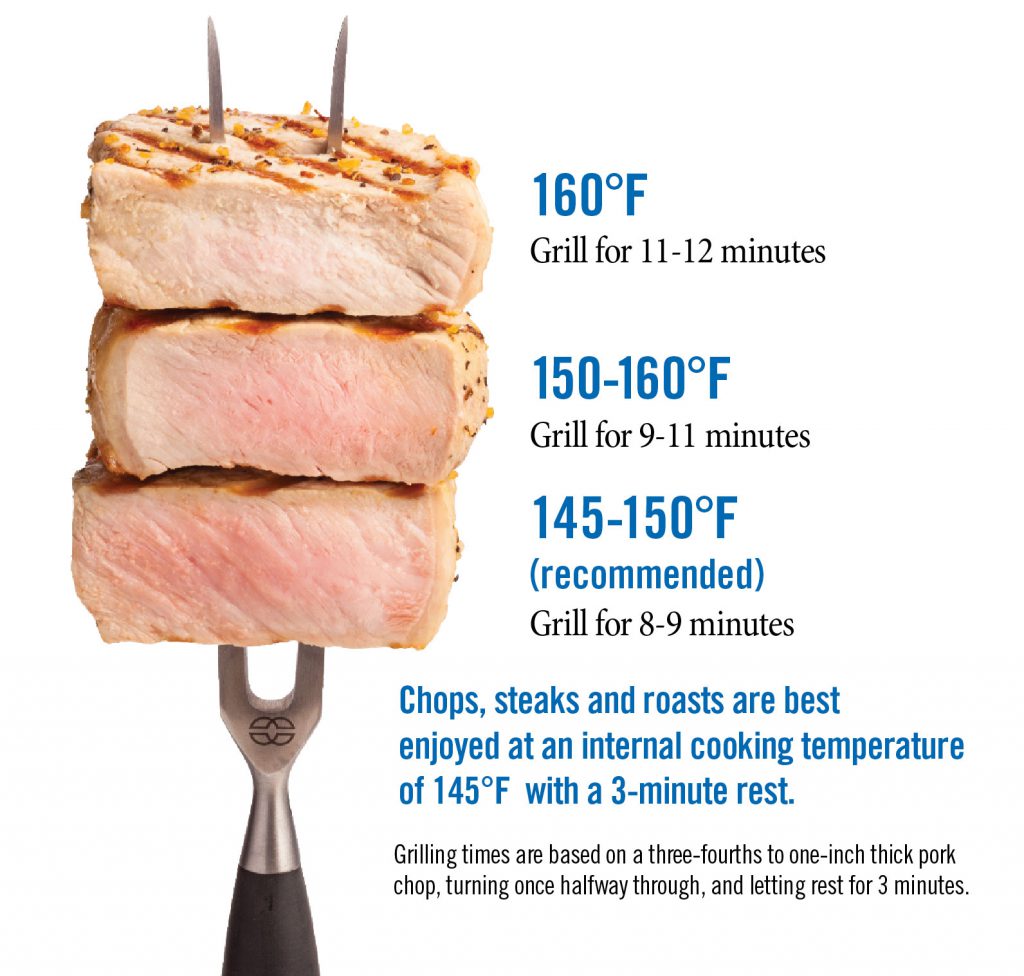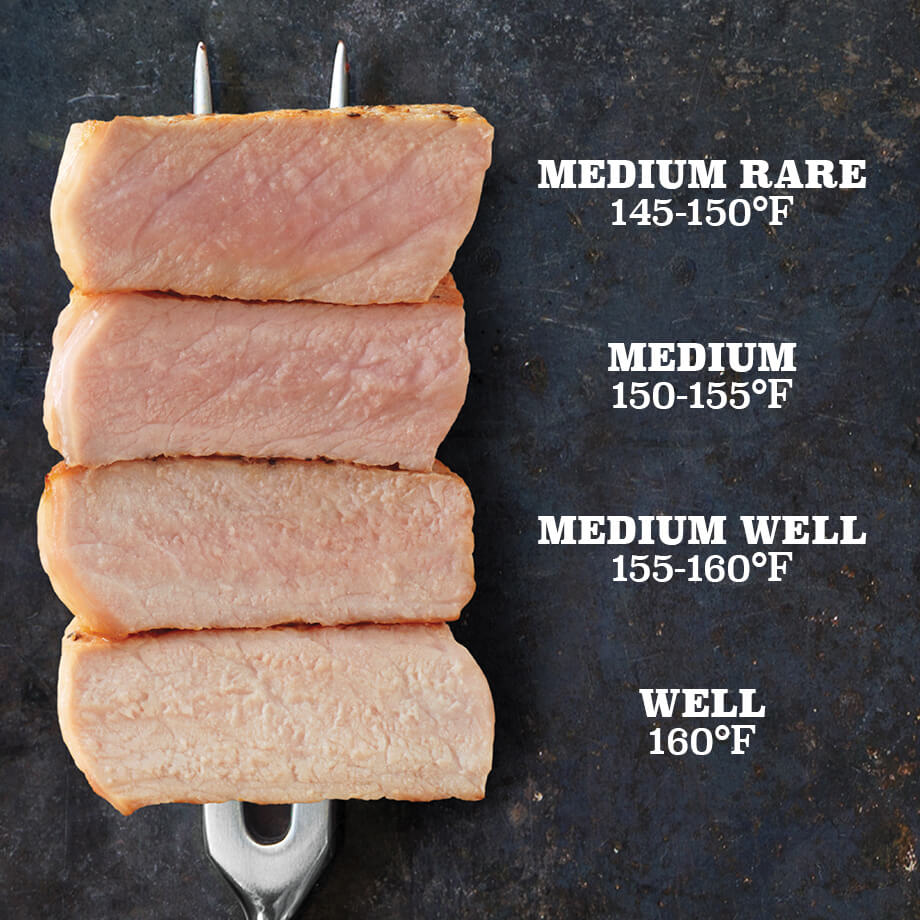Perfect Pork Chop Temperature: Cook It Right!
The thermal state of a cut of pork during cooking is a critical factor in determining its safety and palatability. Achieving the correct internal warmth ensures the destruction of potentially harmful bacteria, while also preventing the meat from becoming dry and tough.
Properly managing heat application offers numerous advantages. It guarantees food safety, enhances the eating experience through optimized texture and juiciness, and reduces the risk of undercooked or overcooked product. Historically, relying solely on visual cues led to inconsistent results; the advent of thermometers has provided a more reliable method for gauging doneness.
The following sections will address specific guidelines for assessing internal doneness, exploring the impact of varying heat levels, and offering practical tips for achieving optimal results when preparing this particular cut of meat.
- Alyssa Grenier Obituary South Windsor Ct Alyssa
- Adria Wu Where Is Five Star Chef
- Delaynee Nelson Bio Age Wiki Facts And
- Dekenta Parchman Michigan Man 30 Who Tortured
- Dr Cade Hunzeker Cause And Death How
Frequently Asked Questions Regarding Pork Chop Internal Warmth
This section addresses common inquiries concerning the proper internal warmth for safe and palatable pork chop consumption. The information presented aims to clarify best practices and dispel potential misconceptions.
Question 1: What is the minimum safe internal warmth for consuming pork chops?
The United States Department of Agriculture (USDA) recommends a minimum internal warmth of 145F (63C) for pork chops. This warmth must be sustained for at least three minutes to ensure the destruction of harmful bacteria.
- Brandon Charnas Bio Age Wiki Facts And
- Meet The Late Ray Liotta S Daughter
- What Is Mike Johnson S Net Worth
- Which Couples From Twin Love Are Still
- Joe Hill Is In Serious Trouble On
Question 2: How should internal warmth be measured?
A calibrated meat thermometer should be used to assess internal warmth. Insert the thermometer into the thickest part of the chop, avoiding bone, for an accurate reading. Multiple readings from different locations are recommended.
Question 3: Does carryover cooking affect the final internal warmth?
Yes, residual heat within the chop will continue to cook the meat even after removal from the heat source. This phenomenon, known as carryover cooking, can raise the internal warmth by several degrees. It is advisable to remove the chop from the heat slightly before reaching the target warmth.
Question 4: What impact does chop thickness have on cooking time?
Thicker chops require longer cooking times to reach the target internal warmth. Conversely, thinner chops will cook more quickly. Adjust cooking time and heat levels accordingly to prevent overcooking or undercooking.
Question 5: How does the bone-in versus boneless distinction influence cooking?
Bone-in chops typically require slightly longer cooking times compared to boneless chops of similar thickness. The bone acts as an insulator, affecting the rate of heat transfer.
Question 6: What are the signs of overcooked chops?
Overcooked chops will be dry, tough, and may lack flavor. Monitoring internal warmth with a thermometer is crucial to prevent overcooking. Visual indicators, such as excessive shrinkage and lack of internal moisture, can also suggest overcooking.
Accurate measurement of the pork chop's warmth, using a calibrated thermometer, is paramount for both safety and optimal taste. Understanding the effects of carryover cooking and the chop's physical characteristics contributes to a more predictable outcome.
The next section will delve into specific cooking methods and their effect on the final product, with a focus on achieving consistent and desirable results.
Tips for Achieving Optimal Results
Achieving optimal results during pork chop preparation necessitates attention to detail and adherence to proven techniques. The following recommendations outline practical steps to enhance both the safety and palatability of the final product.
Tip 1: Invest in a Reliable Thermometer: A calibrated digital thermometer is indispensable. Analog thermometers can be inaccurate; therefore, a digital model offers greater precision when gauging internal doneness. Verify calibration regularly.
Tip 2: Temper the Chops Before Cooking: Allowing the chops to sit at room temperature for 20-30 minutes before cooking promotes more even cooking. This reduces the risk of an overcooked exterior and an undercooked interior.
Tip 3: Utilize a Two-Zone Cooking Method: Sear the chops over high heat to develop a flavorful crust, then transfer them to a cooler zone or reduce the heat to finish cooking. This prevents the exterior from burning before the interior reaches the target level.
Tip 4: Consider Carryover Cooking: Remove the chops from the heat source when they are approximately 5-10 degrees Fahrenheit below the target . Residual heat will continue to cook the meat. Resting the chops for 5-10 minutes after cooking allows the juices to redistribute, resulting in a more tender and flavorful final product.
Tip 5: Adjust Cooking Time Based on Thickness: Thicker chops require longer cooking times. Use a meat thermometer to ensure the interior reaches the appropriate warmth without overcooking the exterior. Thin chops cook quickly and are more susceptible to overcooking; careful monitoring is essential.
Tip 6: Sear First, Then Finish in the Oven (for thicker chops): For chops exceeding 1.5 inches in thickness, searing in a pan to develop a crust and subsequently finishing in a preheated oven at 350F (175C) promotes even cooking throughout the chop.
Adherence to these guidelines will increase the likelihood of consistently producing chops that are both safe for consumption and possess desirable textural and flavor characteristics. Accurate gauging of internal warmth remains paramount throughout the cooking process.
The concluding section will provide a summary of key points and underscore the significance of correct thermal management in pork chop preparation.
Conclusion
This discourse has emphasized the central role of properly assessing thermal state in the successful preparation of pork chops. The attainment of a minimum internal warmth of 145F (63C), as mandated by food safety guidelines, serves not only to mitigate potential health risks but also to optimize the meat's texture and overall palatability. Accurate temperature measurement, coupled with an understanding of carryover cooking and the influence of chop thickness, are indispensable for achieving consistent and desirable results.
The responsible and informed application of these principles is paramount. The pursuit of culinary excellence, when coupled with a commitment to food safety standards, elevates the dining experience and ensures the well-being of consumers. Continued adherence to recommended practices regarding pork chop temperature remains the cornerstone of consistently delivering safe and delicious pork chops.
- Dekenta Parchman Michigan Man 30 Who Tortured
- Ibrahim Chappelle Might Be Funnier Than His
- Joe Hill Is In Serious Trouble On
- Taylor Swift Buys A 2 5 Million
- Who Is Austin Hahn Indiana Man Apprehended

Temperature For Pork Chops On Smoker at Shirley Villa blog

Cooking Temp For Pork Chops at Betty Nicholson blog

Pork Chop Meat Temperature at Marjorie Parker blog